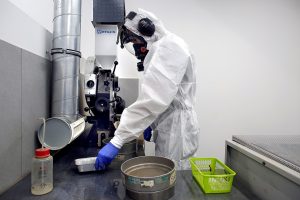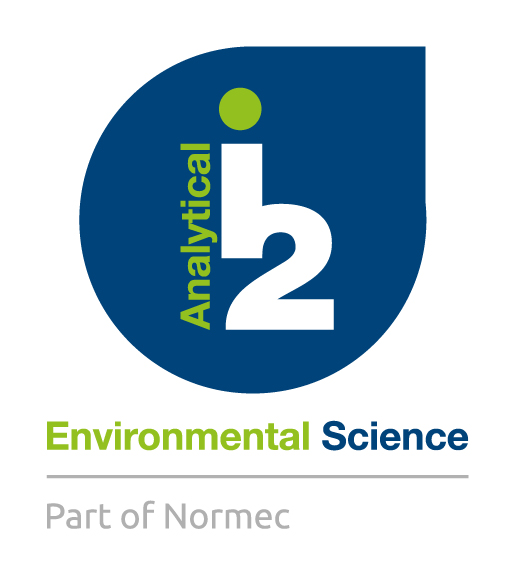
Introducing i2’s Red Lab
Asbestos in the Geotechnical World
The danger and the practical difficulties of handling asbestos have been an issue for Environmental testing laboratories for decades. Getting you the results required to assess all aspects of potential contamination means putting laboratory staff in a position where handling asbestos contaminated soil is a daily occurrence. A large proportion of testing requires either direct manual handling of the soil, or for the soil to be subjected to physical processes (drying, crushing) where respirable fibres may be released to the air.
As awareness has improved, and prevalence has increased, laboratories have developed a range of control measures that allow us to safely perform these routine tasks without putting any of our staff at risk.

Appropriate PPE, including face masks and filtration apparatus, along with HEPA filtered air extraction facilities and rigorous internal monitoring create a safe working environment for the processing of environmental samples.
Whilst techniques like these have been routinely employed for the processing of chemistry samples for many years, only more recently has attention switched to geotechnical testing…
What New Problems?
The biggest issues from the change in testing are volume and process. Whilst a typical chemistry sample will be ≤1kg of soil, and routinely only a portion of that will require drying/grinding/manual handling, a geotechnical sample may be received up to 80kg in mass with most or all subjected to manual or physical processes, including sieving, compression and agitation, which could generate airborne fibres.
How were samples handled previously?
For the large proportion of geotechnical labs, receiving a sample known to contain asbestos or ACM effectively put a stop to any and all testing. At i2 all our geotechnical staff were trained through our in house Asbestos team to look out for and identify potential asbestos fibres/ACM during routine processing and any suspected samples were fast tracked through the Asbestos Lab and a formal identification made by a P401 qualified analyst. But ultimately it would lead to analysis stopping.
How do we create a safe environment?
In order to allow for testing of these “Red” samples – the terminology stems from the British Drilling Association to categorise sites known to be contaminated with traces of Asbestos, Hydrocarbons and Heavy Metals – we needed to be able to provide the same safe working environment for our geotechnical team as we have for our chemistry team, and this has led to the creation of our own Red Lab.
Housed in a separate unit, the Red Lab is an enclosed facility equipped with extensive HEPA filtered air extraction and an upgraded PPE (Personal Protective Equipment) requirement, with “air-locked” areas allowing access for staff and the ability to change in and out of PPE safely.
Available Testing:
We are able to offer the following testing on “Red” samples, both known at the point of receipt and identified during processing:
Want to know more?
If you are interested in more details on how we can help or advise on your project, or would like to discuss any aspect of Geotechnical testing please email; geotechnicaluk@i2analytical.com or call +44 (0)1604 705913





